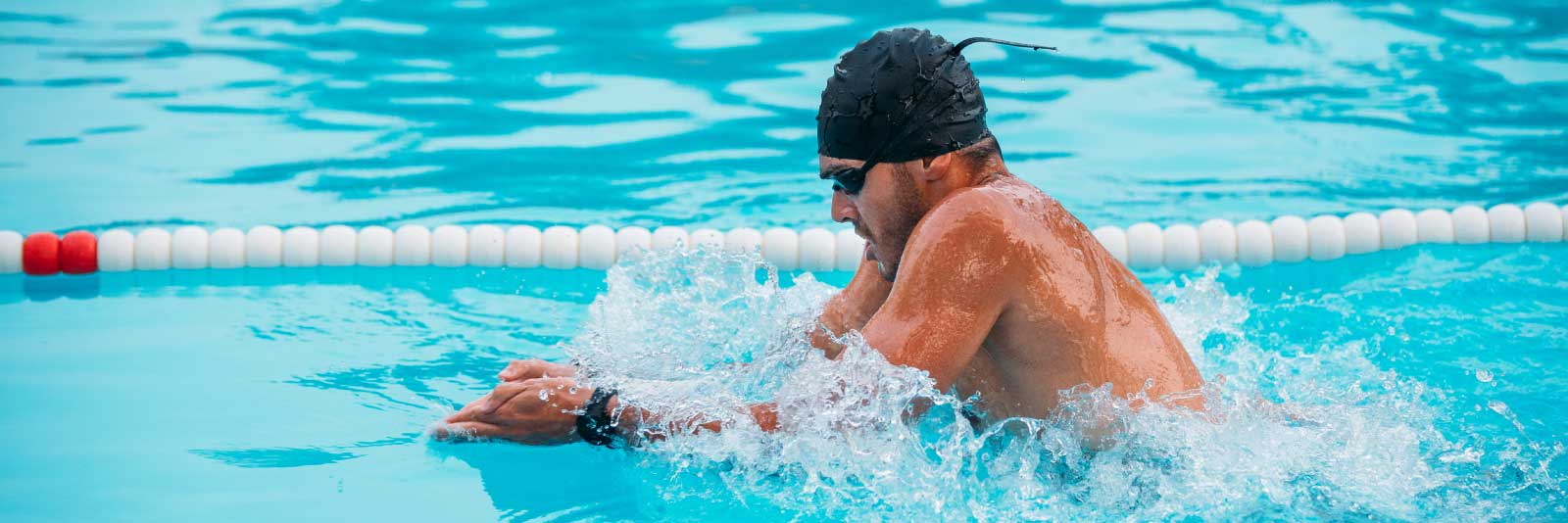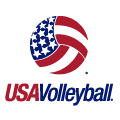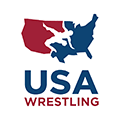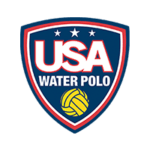Men’s College Swimming Scholarships

High school swimmers with a desire to be recruited and earn a men’s college swimming scholarship will find quickly they aren’t the only one on that quest. In NCAA Divisions 1 and 2, men’s swimming scholarships are part of the category the NCAA calls the equivalency sport. The total allotment of scholarships may be divided in a number of ways among those on the men’s swimming team as long as the total number of awards doesn’t go beyond the NCAA’s scholarship limit. NAIA swimming scholarships may also be divided in this way among team members. Junior college members of the NJCAA also have a men’s swimming scholarship process. Where do I find swimming camps near me?
NCAA Division 3 men’s swimming teams are not permitted to offer athletic scholarships. However, there are several ways for institutions to offer academic grants to help cut the total cost of attending a university.
Read on a full breakdown of information about swimming scholarships.
Quick Links
Can I get a scholarship for swimming?
Yes, there are a number of men’s college swimming scholarships available to high school student-athletes. To earn a swimming scholarship, student-athletes must show the coach how they could contribute to the team’s overall success at the conference and national level. By thinking beyond their individual times and understanding their role within a team, student-athletes can find the right athletic fit and increase their chances of getting a scholarship.
Additionally, swimmers must be prepared to work hard within every aspect which goes into scholarship selection, like following the NCAA Eligibility Center’s educational guidelines, as well as being proactive about contacting potential colleges to accomplish the goal of receiving a men’s swimming scholarship.
How many swimming scholarships are there?
|
Division |
Number of Teams |
Total Athletes in Division |
Average Team Size |
Scholarships Limit Per Team |
|
NCAA D1 | 131 | 3,821 | 29.2 |
9.9 |
|
NCAA D2 | 79 | 1,778 | 22.5 |
8.1 |
|
NCAA D3 | 239 | 4,346 | 18.2 |
n/a |
|
NAIA | 39 |
310 |
11 |
8 |
|
NJCAA | 15 |
154 |
13 |
15 |
|
CCCAA |
47 |
703 |
15 |
n/a |
It’s important to understand that the scholarship limits per team equal the maximum number of scholarships for a fully funded program and not all programs are fully funded.
The NCAA D1 Council adopted legislation that loosened regulation regarding need-based aid and academic scholarships that are not tied to athletic ability. Effective August 1, 2020, teams in equivalency sports like swimming will not have any athletes’ need- and academic-based aid be counted against a team’s maximum athletic scholarship limit. Prior to this rule change, student-athletes had to meet certain criteria for their additional aid to not be counted against a team’s athletic scholarship limit.
Swimming teams will still have a maximum athletic scholarship cap, but student-athletes can seek to stack need-based aid and academic scholarships on top of their athletic scholarships. With school and family budgets being impacted by the coronavirus, this rule change should allow swimming programs that have the funds to extend more money to families and athletes that need it.
Division 1 Swimming Scholarships
- Total men’s swimming teams: 131
- Maximum scholarships per team: 9.9
Even though D1 men’s swimming divides scholarships among athletes in various ways, there are still some world-class swimmers who will be given a full scholarship each year. This means many strong swimmers are fighting for limited opportunities at the D1 level.
To be considered at this highest level of college competition, swimmers need times that are competitive with the Futures Championships cuts. That said, there is a lot of variance from one D1 program to another and finding a scholarship opportunity is about finding the school where your times are competitive with the current swimmers. Obviously, the faster you can swim, the better the opportunity for a scholarship award. GPA and ACT scores are very important here, too. College scholarships are sometimes won or lost, not because of a few tenths of a second in the pool but because recruiters want a swimmer who will be able to carry the dual workload of successfully attending classes and swim practices.
Division 2 Swimming Scholarships
- Total men’s swimming teams: 79
- Maximum scholarships per team: 8.1
Like D1, those pursuing D2 men’s swimming rosters face a lot of competition for their scholarship award. Interestingly, almost 16 percent of D2 swimmers are international athletes. This is twice the number of international swimmers at the D1 level and has a direct effect on the way schools distribute scholarship monies. While recruiters are a bit more lenient in what they are looking for in the area of swim times, it is still a highly competitive pace. Some D2 swimmers have the capability to compete with their D1 counterparts but have chosen the D2 route due to a greater scholarship award offered or other aspects of the particular school, like campus life and academics.
Division 3 Swimming Scholarships
- Total men’s swimming teams: 238
- Maximum scholarships per team: N/A
There are about the same amount of D3 men’s swimming programs as D1 and D2 combined. Swim times are still important for college recruiters and so are educational marks. The higher your GPA and ACT/SAT scores, more opportunities in the college swim recruiting process may be awarded with academic-related monies to cut overall educational costs, since swimming scholarships are not available at this level.
NAIA Swimming Scholarships
- Total men’s swimming teams: 22
- Maximum scholarships per team: 8
Just like D1 and D2 men’s swimming, NAIA schools can divide scholarship funds as they see fit, as long as the total doesn’t exceed the NAIA allotment. The average roster size for NAIA teams is 11 swimmers. The qualifying swim times for recruits are similar to D3, but the educational requirements (GPA, ACT/SAT) are less restrictive.
Junior College Swimming Scholarships
- Total men’s swimming teams: 67
- Maximum scholarships per team: 15
Do not discount the junior college route as an entry point to men’s college swimming. A great number of college swim recruits for NJCAA and CCCAA schools receive full scholarships. If your grades are not meeting the requirements of D1 or D2 level schools, but your swim times would be comparable, this may be the proper choice to make. Depending on your swim success, you could transfer to a NCAA or NAIA university.
Finding the Best Colleges for Swimming Scholarships
In NCAA D1 the most prominent men’s swimming programs are Texas, California, Indiana, NC State, USC and Stanford. In NCAA D2, the top scholarship schools include Delta State, Grand Valley, Queens (NC), Indianapolis, Simon Fraser and Lindenwood. The top NAIA programs are Keiser, Cumberland, West Virginia Tech and Lindsey Wilson.
NCAA D3 institutions do not offer scholarships but do have several academic and other types of scholarships available. For swimmers with ACT/SAT scores and a high GPA, schools such as Denison, Emory, Kenyon, Carnegie-Mellon and Johns Hopkins have outstanding men’s swimming programs.
We’ve compiled the full list of men’s swimming colleges at each divisional level, which can be sorted by conference, state and college names. View the lists here:
How to Get a Swimming Scholarship
Student-athletes can increase their chances of being awarded a scholarship by finding a swimming program in which their specific skills and advantages could help the team overall to score points. Coaches aren’t evaluating swimmers solely based on their individual strengths; they’re looking at how each recruit’s abilities would complement other athletes’ contributions to the team. Here are some tips to remember:
- Research Programs of Interest: By researching particular programs and seeking opportunities where their specific skills would add value to the team’s overall ability to score points, student-athletes may find their path to a swimming scholarship. Swimmers should learn the best relay techniques to stand out to recruiters. They can do this by doing their homework and pinpointing colleges needing their event strengths.
- Focus on Academics: Outside of the pool, student-athletes should take charge of their grades and make sure they are taking the necessary classes required by the NCAA Eligibility Center, as well as take ACT and SAT tests early and often.
- Create a List of Target Schools: By determining what division levels to target, based on both athletic and academic goals, student-athletes and their families can gain a better sense of swimming scholarship opportunities. For example, a swimmer’s times may put him in the mix for NCAA D1 recruiting, but if he considers NCAA D2 or NAIA programs, he will likely have a better chance of earning a swimming scholarship.
When to Start Your College Swimming Recruiting Process
The college swimming recruiting process should be top of mind as soon as a student-athlete determines they want to compete at the next level in men’s swimming. In a perfect world this happens during freshman year of high school, so the family can prepare for when the recruiting process actually begins.
Recruiting contact for men’s swimming typically begins during junior year, according to NCAA research. However, the new NCAA rules allow recruiting contact to begin on June 15 after the athlete’s sophomore year. Many coaches believe that while the NCAA rules help curb early recruiting for other sports, it actually does the opposite for swimming – since college coaches now are ramping up efforts in between sophomore and junior years, while historically recruiting contact began during junior year, according to the CSCAA.
Swimmers should consider the beginning of communication with coaches as when they should have their initial work done. Leading up to the recruiting activity of junior year, student-athletes and their families should have an understanding of the different division levels, a list of target schools and begin contacting any schools they’re already interested in.
How to get recruited and starting the recruiting process.
When Do Colleges Start Recruiting for Swimming?
Recruiting communication for NCAA D1 and D2 coaches can officially begin for men’s swimming after June 15 of the student-athlete’s sophomore year.
However, this doesn’t mean college coaches are waiting until the summer after sophomore year to begin building their recruiting lists. Coaches use sites like NCSA and Collegeswimming.com to identify and monitor potential prospects as early as freshman year.
Coaches with D1 swimming scholarships available will point to your sophomore swims as key to getting your name out as a potential recruit. Coaches with D2 swimming scholarships (as well as NAIA and D3 recruiters) are actively involved at the same time.
How to Get Recruited for College Swimming
The number one factor in becoming part of the college swimming recruiting process is to become great at your event. Beyond developing your athletic skills, one of the most important things to remember is that recruiting won’t just happen to you because you’re good. Student-athletes and their families can take many steps to get the results they want. Here are some of the main steps along the way:
Get started: First, set your expectations. By researching swim programs at all the division levels and evaluating opportunities where your event times could be valuable to the team, you can create a list of target schools with 5-10 safety schools, 10-20 target schools and 5-10 reach schools.
Attend a skills camp: Attending a swimming camp can help student-athletes gain exposure and take their talent to the next level. A good camp experience will help student-athletes develop their techniques to improve times, as well as provide a well-rounded experience in which they come away with learnings, tips and connections they can apply to their development and recruiting processes.
Contact coaches: One of the best ways to make sure you’re on a coach’s radar is to contact the coach yourself. Here’s our full guide on how to contact coaches.
How to Make a Good Swimming Recruiting Video
Although swimming coaches make their recruiting decisions primarily based on recruits’ event times, swimmers can highlight their technique and showcase their athletic potential with a strong recruiting video.
The video should highlight the athletic features that may be valuable to the coach, such as explosiveness, that coaches can’t see by only looking at event times. The video should utilize graphic tools like the spot circle or spot shadow to let coaches know which swimmer to focus on.
Remember, in the overall recruiting process, it’s important to show swim coaches how you could contribute to the team’s success, so you may consider featuring relays.
Read more about recruiting videos.
How to make a swimming skills video or diving skills video
A swimming skills video can be a great way to get on a coach’s radar. While not all men’s swimming recruits have unlimited access to a pool, there are still ways to stand out with dryland workouts and techniques to simulate a pool environment.
In the video below, former D3 swimmer and Head Coach Jeff Smith shares his tips for creating a swimming skills video that will help potential recruits get noticed, like lap swimming at full (race/competition) speed and displaying swimming times on screen whenever possible. Coach Smith also suggests recruits include clips from their strength and conditioning and non-sport specific fitness workouts to improve (and display!) their stamina, speed and overall athleticism.
Putting together a diving recruiting video is a great opportunity to connect with and be evaluated by college coaches. Watch NCSA Recruiting Coach and former D3 swimmer and diver and D2 and D3 college coach Dan Allen break down the basics of what diving recruits should know before filming their diving skills video, including:
- Practice drills and reps—including approach and takeoffs
- Filming from multiple angles and zooming in and out
- A variety of dives—forward, back, reverse, inward, twisting and more
How to Contact College Swim Coaches: When Can Swimmers Contact Coaches?
Due to new rules enacted by the NCAA, the college swimming recruiting process has changed slightly for D1 and D2 coaches. They cannot initiate any type of communication with recruits until after June 15 of the swimmer’s sophomore year of high school. The rule doesn’t apply for D3 colleges. The NAIA has no such restrictions, either.
Despite these restrictions on coaches, there are no rules that limit when student-athletes can reach out to college coaches. Swimmers should take advantage of their ability to reach out and get on a coach’s radar – even if a coach can’t respond, they can read emails from potential recruits and even follow them on social media or other outlets to follow their progress.
Families should gather all the information they plan to include in correspondence with coaches, such as a recruiting video, verified stats from a third party like collegeswimming.com, academic information like GPA and standardized test scores, your schedule of meets and your contact information, as well as your high school and club coach contact information. You can also keep all this information on your NCSA profile.
The main ways you’ll communicate with coaches, prior to an unofficial or official visit, is through email, phone calls, text messages and social media. We’ve put together a complete guide on how you can start your outreach to swim coaches.
Although you want to be mindful of not sending too many communications to a particular coach, it’s a good idea to keep them posted when you have new athletic or academic stats available, if you’re planning a visit to their school or if there’s an upcoming tournament you’ll be at in their area.
















